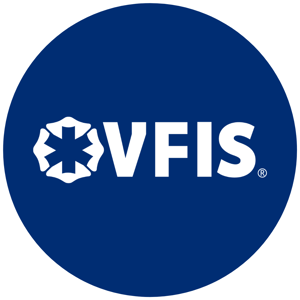Why it’s important to prepare for potential threats – and the 3 planning phases you should know.
Imagine a 30-foot section of your 150-foot hose on the side of your fire truck becoming loose, uncoiling and whipping around the streets of a local neighborhood as you drive. You don’t realize anything is wrong because your ears are filled with the sounds of the sirens and diesel engine – but you’re leaving a path of destruction behind you. And then the imaginable happens, the hose hits two young girls and one dies of a head injury the following day. This is a tragic event that one department had to face. If you were the chief, what would you do? What would you say?
As an emergency responder, you understand better than most that life doesn’t always go as planned – in fact, you’re equipped to help others handle all types of disasters, hazards and emergencies. But that doesn’t necessarily mean you’re properly prepared to handle a crisis if it happens to you.
What qualifies as a crisis?
A crisis is any significant threat to your operations that can have negative consequences if it’s not handled appropriately.
Examples of a crises that could impact emergency response teams include:
- Theft, fund restructuring or other circumstances that result in unexpected financial loss.
- Major incidents, accidents or malfunctions that result in injuries and/or loss of life.
- Cybercrime that leaves your organization vulnerable to threats, exposes private data or completely impairs your emergency response system.
- Events, occurrences or lawsuits that could damage morale and hurt your reputation.

What can your fire department, ambulance agency or communication center do now to prepare for the unknown?
ReputationManagement.com reports that most organizations will experience a potential crisis about every two years – and that 59% of organizations have experienced a true crisis but only 54% have a plan in place to deal with them!
You can start to manage a crisis before it ever occurs by proactively creating a plan that outlines how you’ll prepare for, respond to and recover from a potential crisis. Let’s review the main points of the free Crisis Planning guide on vfis.com that outlines a phased approach to help your organization get started.
The 3 Phases to Crisis Planning and Management
1. The Pre-Crisis Phase
Hopefully, this is the phase your organization is in right now. This is where you focus on preventing and preparing for potential crises – which will ultimately help you make more effective decisions and reactions when something occurs.
Start by creating a crisis management plan that:
- Is reviewed and updated annually.
- Addresses potential crises and the needs for those instances like access to emergency funds.
- Designates a crisis management team with senior staff, leadership, legal counsel and public relations professionals.
- Identifies all stakeholders and assigns roles including the decision-making chain of command and primary spokesperson (who is training in media relations) for each communication channel.
- Establishes a communication plan detailing how information will be relayed internally and externally. This can include templates and drafts of communication including official statements, press releases and online announcements.
- Includes requirements for all team members to receive crisis management training on an annual basis.

2. Crisis Response
After a crisis occurs, your organization’s response can make all the difference. In fact, it could turn a quick (and quiet) event into a secondary crisis. While the plan you create in Phase 1 will outline a lot of the protocol you’ll use for Phase 2 – there are a few things to keep in mind.
- Be timely. A slow response or no response at all allows other people to tell your story and control the narrative. Give a statement as soon as possible –this is especially important if public safety is a concern.
- Be accurate and consistent. Incorrect or differentiating information could be potentially dangerous to your community. Be truthful, establish clear messaging and remain consistent.
- Be accountable. Don’t play the blame game or try to cover anything up. Take responsibility, react and respond appropriately, and express concern for anyone impacted by the crisis.
3. Post-Crisis Phase
After a crisis, you’ll want to get back to “normal” quickly– but that doesn’t mean the situation should be completely ignored. You’ll want to continue to focus on two things:
- Communicate any updates. Whether new information arises or you’re following up on communication from Phase 2 – continue to provide updates to appropriate parties. For example, if you experienced a cyber breach, let everyone know the measures you’re taking to help protect public data in the future.
- Learn and grow. While a crisis may be no one’s fault – there can always be lessons learned. Look at the root cause of the crisis, make any relevant changes, take the opportunity to evaluate your current crisis plan and see what you can improve upon.
Even if you’re doing everything right, sometimes the unexpected happens without any rhyme or reason. In those emotional, and even tragic, moments – you’ll be glad you took the time to develop a plan and prepare your team.
DISCLAIMER
The information contained in this blog post is intended for educational purposes only and is not intended to replace expert advice in connection with the topics presented. Glatfelter specifically disclaims any liability for any act or omission by any person or entity in connection with the preparation, use or implementation of plans, principles, concepts or information contained in this publication.
Glatfelter does not make any representation or warranty, expressed or implied, with respect to the results obtained by the use, adherence or implementation of the material contained in this publication. The implementation of the plans, principles, concepts or materials contained in this publication is not a guarantee that you will achieve a certain desired result. It is strongly recommended that you consult with a professional advisor, architect or other expert prior to the implementation of plans, principles, concepts or materials contained in this publication.
Related posts
We asked 10 members of our VFIS Team to name one auto-related risk that they believe is underdiscussed in fire and EMS agencies. Here’s what they said.
Most volunteer fire departments rely heavily on POVs, but there are inherent risks you should know.
Establish a Emergency Vehicle Operations Program that includes driver/operator requirements to help ensure your vehicles are in the right hands.










Submit a Comment